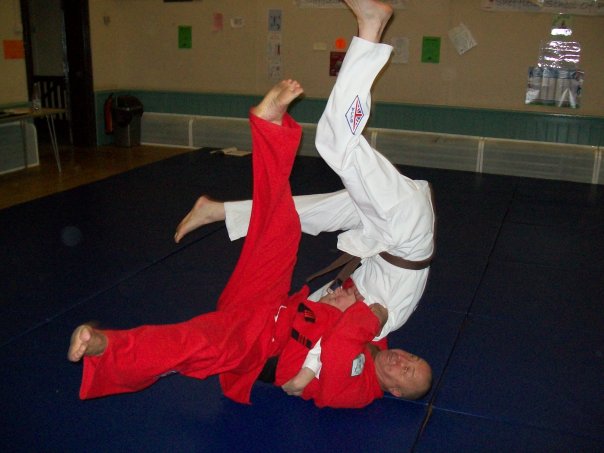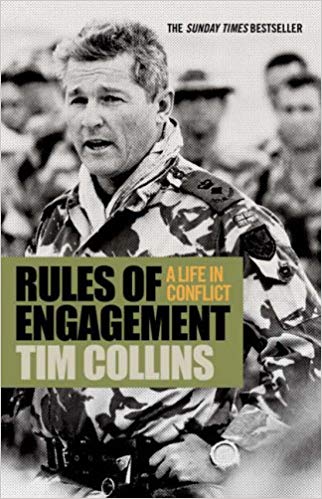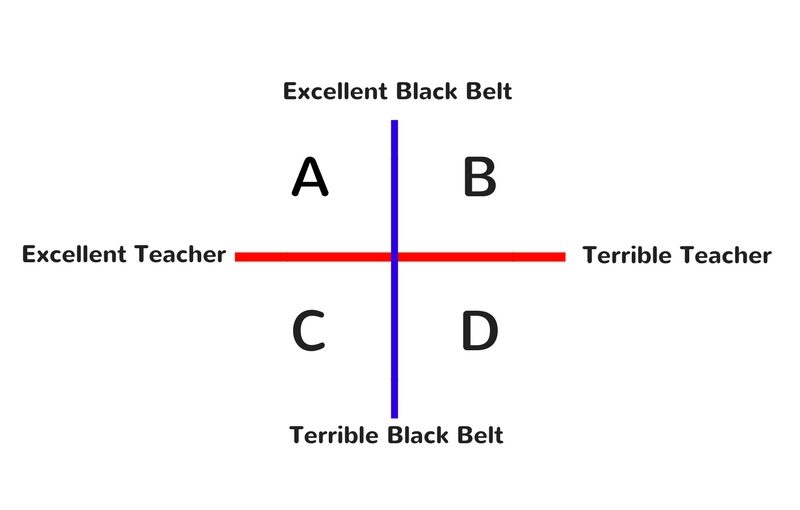In this article we examine why we need to train the mind as well as the body, better people than us have written extensively on the theory and practice and between us we have used over their works to inform our training methodology. Marc MacYoung and Rory Miller in particular but many others contributed to my learning and how we help people train at the Academy of Self Defence.
Whether we class ourselves as teaching a martial art, self defence, RBSD or whatever we call our stuff, we think that teaching the practical skills and techniques is the easy bit, that does not mean everyone teaches well. The vast majority of ‘instructors’ in this diverse and entirely unregulated ‘industry’ of ours have little or no training in how to teach. Most have worked their way through the ranks, put in the time on the mat, some have not, and, being generous here, most do what they do with good intentions. Some, luckily a minority, are either con artists, deluded or both.
Possession of the relevant techniques and skills of what is being taught, good coaching skills should be a no brainer and a sound theoretical underpinning of what you are teaching are the three main elements that instructors need. The top these up with bags of confidence and excellent communication skills and away you go. With these five things together you can teach the techniques, the skill, the art but how effectively can we train the mind.
Let me digress slightly, over the years we have had a quite a few discussions with students, instructors and especially between the 2 of us. Most people (students) understood that we could teach simple but effective techniques that they could learn, drill and repeat in comfort and increasingly under pressure but they questioned whether they could actually bring them to ‘do it’ to somebody even if it was somebody attacking them. The honest answer is of course that we cannot know whether they could or not. It is not an answer many want to hear. More importantly it is less an answer anybody wants to give, not if your income relies on getting them signed up as student. That is a killer of a dilemma and for many it is the elephant in the room, everybody knows it is there but they are all willingly blind.₂
Here is another killer, no pun intended. Learning martial art is no walk in the park, we speak from experience, but it should be underpinned by a wider skill set. We do not need to go out and take degree after degree course in order to develop this but an attitude that celebrates and indulges us in continuing professional development is essential. We will never be fully formed as humans, there is too much ‘knowledge’ out there to ingest and digest but we can strive to learn a little more everyday.
So how did learning the techniques and drilling them over and over creates the neural networks that make future use possible, so actually training is the keystone in the process, without it we cannot build further. Our students are not empty vessels, they have their own fully developed values and beliefs, inculcated over many years and these include, for the normal person, beliefs related to harming and damaging other human beings, beliefs that tell us it is wrong, a taboo. Our students are not signing up to have their values and beliefs reprogrammed, they want to be able to prevent being hurt. well it is a long job to help them achieve this and whether we know it or not we will be using operant conditioning.
Now the person who manages to assist ordinary decent people develop a mental attitude that will instil in them the mental ability to dish out some actual or grievous bodily harm, albeit in self defence, in a fun, sweet and cuddly way will probably mint it. Or set their students up for injury or death.
For a small example just watch the following video.
Time for a new acronym, EAR, this stands for Encourage, Assist and Reward. In the clip Jack receives two instructions, being told to roll over plus the motion made with the reward, over a period of time he is persistently encouraged with an even tone, exactly the same stimulus each time, he is assisted then rewarded, he desires the reward, he realises that if he rolls over when asked he gets the reward, clever Jack. Our students are more sophisticated animals but the process is the same, within our training we need to introduce stimuli that represent a threat, the student is encouraged to respond with power and aggression to repel or downgrade the threat quickly, this done they receive praise, the reward they desire, EAR. We are encouraging them to develop their controlled aggression. For a more violent example please take a look at the following.
We have all heard many anecdotes of the effect of just hearing the command ‘fix bayonets’ has had in diminishing an enemies will to fight on, it is the primitive fear of being impaled on cold steel. Killing someone with a bayonet is not neat and never very pretty and incredibly hard to do, from a psychological perspective, but replace the dummies for our focus or Thai pads and the training process is the same, we too use operant conditioning, (I notice it is a war face and not a killing face, on camera).
Militaries the world over have invested money beyond imagination into working out how to make normal people into killers₃, not irreversibly but as and when needed, in battle. Much of that research is underpinned by psychological and sociological factors and we can take it and use the same underlying principles. Of course we are not going to scream and use profanities at our students, of course not, we are going to scream and use profanities with them as they use force, use violence to defeat or repel the attacker. If we are to empower them to quickly turn a state of normality to one completely abnormal to them, like training the young soldiers to kill manually up close, we need to build on the new neural networks created by learning and drilling technique. Once the drill is hardwired hardware it is possible to create yet more neural networks connected to them, repeated training loads the supporting software. we make the actions that make up our responses to attack habits. Predators have habits, attackers have habits, we have habits, we can create new habits₄ lets look at the psychological training of the military.
https://www.youtube.com/watch?v=s7waGhujn44
The example used explains the need for close analysis of the situation and identification of component factors and the relationships between them. So removing the food vendors, left field if ever you saw it, removed the threat.₅
We argue it is good practice to analyse our students and our training, identify the component parts and the relationships that exist between them. Maybe we need to analyse the drills, the equipment and environment in which we train. Is the threat quietly menacing or threatening verbally, is the threat approaching in interview style or is it an ambush, are you on lovely mats with well-lit and dry surroundings or are you in a burnt out, dim shell of a building or a deserted car park. Are we training both the mind and the body? We argue we need to Encourage, Assist and reward our students as they progress from automatic repetition to a thought out series of actions based on what the threat is and not what an instructor said the threat would be.
Think about it, we all train mostly in safe, well-lit dojo and gyms, it is not where our students will be attacked. Maybe we need to not only think outside the box but train outside it too. Maybe we need to experiment, to play around with how and where we do things, please let me know how you work to train the mind as well as the body not just to learn the drills and techniques but to apply them with controlled aggression. Last point, to EAR you also have to hear.
We look forward to hearing from you, comments, criticisms and your thoughts all welcome. For now it is back into the trenches for us and until then, fix bayonets and remember…….
https://www.youtube.com/watch?v=ejmFSN2qBG0
Marc and Rory have both produced huge volumes of excellent work in books, video, in training sessions and on their websites, go help yourself.
2 ‘Violence of Mind: Training and Preparation for Extreme Violence’ by Varg Freeborn.
3 ‘On Killing: The Psychological Cost of Learning to Kill in War and Society’ by Dave Grossman.
4 ‘The Power of Habit: Why We Do What We do and How to Change’ by Charles Duhigg.
5 ‘Left of Bang: How the Marine Corps’ Combat Hunter Programme can Save Your Life’ by Patrick Van Horne and Jason A. Riley.










